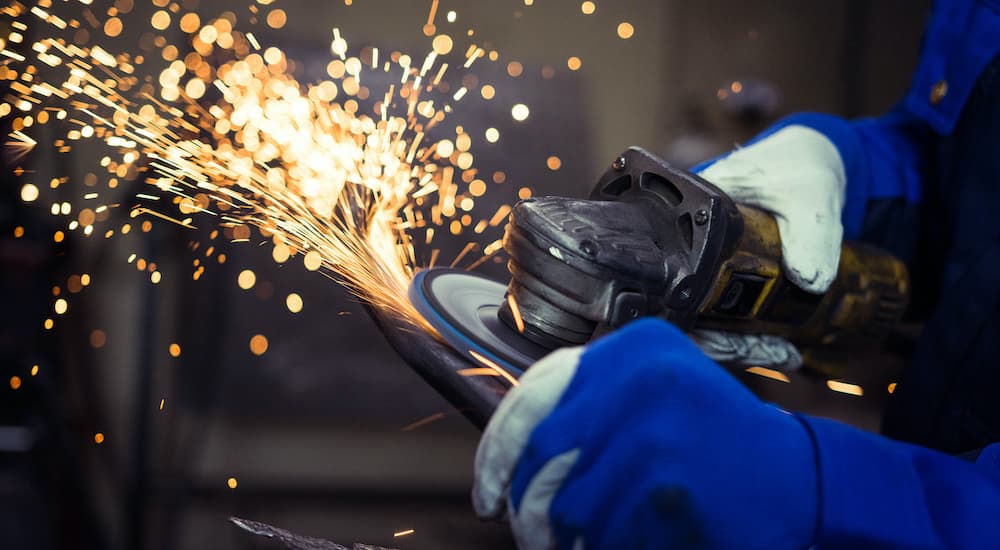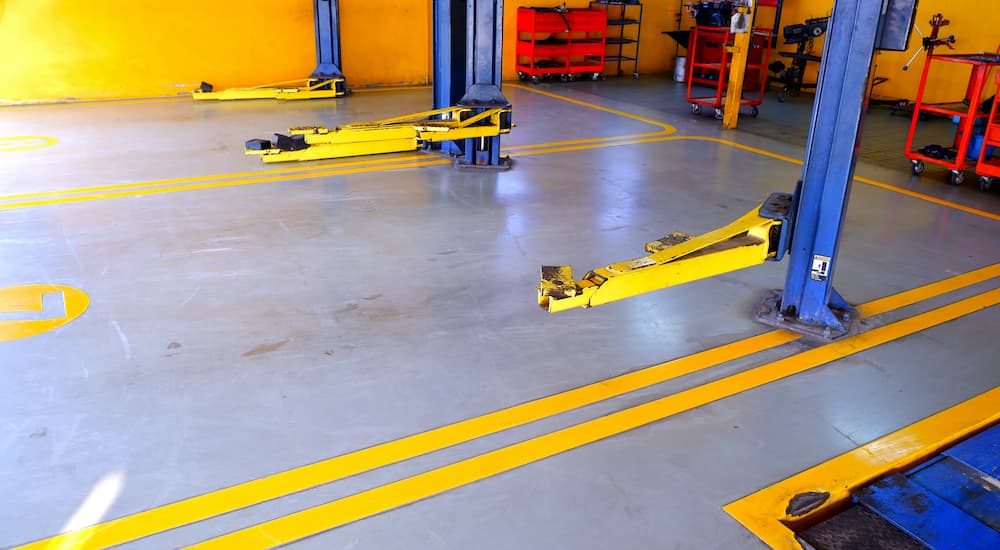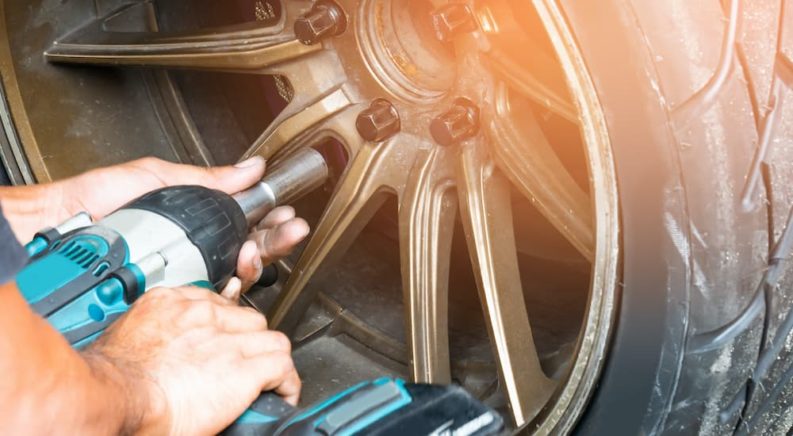Most automotive DIY work can be accomplished with a fairly basic set of tools – but some people will always want to do more. Whether that means tackling major repair work, restoring classic cars, or taking car mods to the next level, then you are going to need a more serious set of tools. While it may start with power tools and advanced diagnostics gear, by the time you have all the advanced tools you need, your garage may begin to resemble a small machine shop.
As you get deeper into automotive work, you will find that many tasks require highly specialized tools. However, there are many advanced tools that are useful in a variety of different jobs or are simply indispensable in any well-equipped garage. While it is unlikely that you are going to need to go out and buy all of these tools all at once, here are some of the purchases that you should start considering before diving deeper into automotive repairs, restoration, and upgrades.
#1 – Impact Wrench
While a good ratchet set and breaker bar can take you pretty far, investing in an impact wrench can save you a lot of time and effort. Unlike an electric drill, an impact generates much higher torque and can break loose virtually any nut or bolt. However, the power of an impact can damage parts, so don’t get too trigger-happy. For maximum convenience, we would recommend looking for a cordless model that shares a common battery pack with other power tools.
#2 – OBD2 Reader
If you haven’t picked one up yet, a high-quality OBD2 reader is an essential aid in any form of troubleshooting. While there are plenty of cheap smartphone adaptors available, a dedicated OBD2 reader will bring additional features that can help you pinpoint the problem more quickly, access more systems, conduct active tests, and generally make your life easier. While the best readers can be fairly expensive, a good OBD2 reader can pay for itself pretty quickly.
#3 – Power Probe
If you find yourself working with wiring harnesses and other electrical components, then a power probe is an indispensable tool. Effectively a more advanced multimeter with even more functions, a power probe allows you to selectively energize circuits, allowing you to test components and trace malfunctions without having to have the whole harness assembled and hooked up.

#4 – Angle Grinder
Sometimes, violence is the answer, and an angle grinder is guaranteed to remove even the most stubborn bolts. This tool is also valuable for any sort of cutting, including bodywork. To keep things convenient, look for a cordless model that shares a common battery with your other tools. Don’t forget to invest in a good stock of different blades either – each blade has its own uses, and you will break a few as you work.
#5 – Borescope
There are a lot of small parts and tight nooks in a car, and a borescope can help you inspect everything more easily. This small flexible tube with a camera on the end can be fed into even the narrowest gaps, allowing you to check out virtually every part of your car, especially internal engine components such as the cylinder housing, without having to disassemble it.
#6 – Vise
When doing any sort of work on smaller components, having a vise on your workbench is guaranteed to make the job easier. Effectively giving you a third hand to hold things in place while you work, a vise is indispensable when shaping or modifying individual parts. While you can get vises that will temporarily clamp to any work surface, if possible, you will want to invest in one that is securely bolted to your workbench.
#7 – Soldering Iron
If you are modifying wiring harnesses, you will need a soldering iron. However, which soldering iron to get will depend on the work you are doing. Thicker wires will require a hotter iron, but using an iron that is too powerful will make your job more difficult if you are working with more delicate components like aftermarket audio systems. If possible, look for a cordless soldering iron that shares a battery with your other tools.

#8 – Plasma Cutter
While it may seem drastic, a plasma cutter will be your friend if you are doing any sort of bodywork. Remember that car body panels are relatively thin, so you don’t need to go out and buy the most powerful cutter you can find. It is more important that you find one that is easy to use – particularly look for a flexible design with a long lead. Having both 110V and 220V connectors can also be worth it, depending on your workspace.
#9 – Blowtorch
A blowtorch is a remarkably useful tool to have around the garage. These can be operated with a number of different gasses, from butane and propane to MAPP gas and acetylene. One of the most basic uses of a torch is to heat up stubborn fasteners so that they can be more easily removed. However, you can also use them for simple braze welding in non-critical areas.
#10 – Bandsaw
If you need to do a lot of cutting, handheld power tools are not the best option for the job. Instead, look to invest in a quality bandsaw. While on the more expensive side, these saws will provide you with faster and more consistent cuts while being somewhat safer to use as well. However, you will need space in your garage, as well as a 220V connection.
#11 – Drill Press
Similar to a bandsaw, a drill press is not a necessary tool, but it can make things a lot easier. If you have any repetitive drilling tasks, using a drill press will be quicker and more reliable than working with a hand drill and a vice. Most drill presses also only need a 110V outlet, so they only need a bit of extra space in your garage.
#12 – Engine Hoist
If you are planning to do an engine swap, then a proper engine hoist (also known as a “cherry picker”) is well worth the cost. Although you can rigg up a DIY setup, having a quality design will be far safer and generally easier to use as well. You have two options – a floor unit allows a lot of flexibility and can be used anywhere. Plus, many models will fold up when not in use to save space. However, if you are setting up your garage for the long run, a ceiling-mounted hoist is relatively inexpensive and takes up less space.
#13 – Engine Stand
Modern engine bays tend to be on the cramped side, and most serious engine work is best done with the engine outside of the car. A purpose-built engine stand is an affordable way to safely support the engine while keeping every part of it accessible for easy work. Trying to work on an engine without using an engine stand is generally an exercise in frustration and not worth saving the small amount that getting the proper tool would cost.

#14 – Lift
Anyone who has done any automotive work knows just how much of a pain working under a car can be. That is why the holy grail of every DIY mechanic is a garage lift. You might be thinking that such a serious piece of equipment is unattainable, but you would be wrong. A basic two-post lift can be had for a couple thousand dollars and is well worth the investment if you often find yourself breaking out the jack stands to work on your car. Four-post lifts are another option that allows you to essentially double your garage space but will be more expensive and are usually not quite as handy for working on the vehicle.

